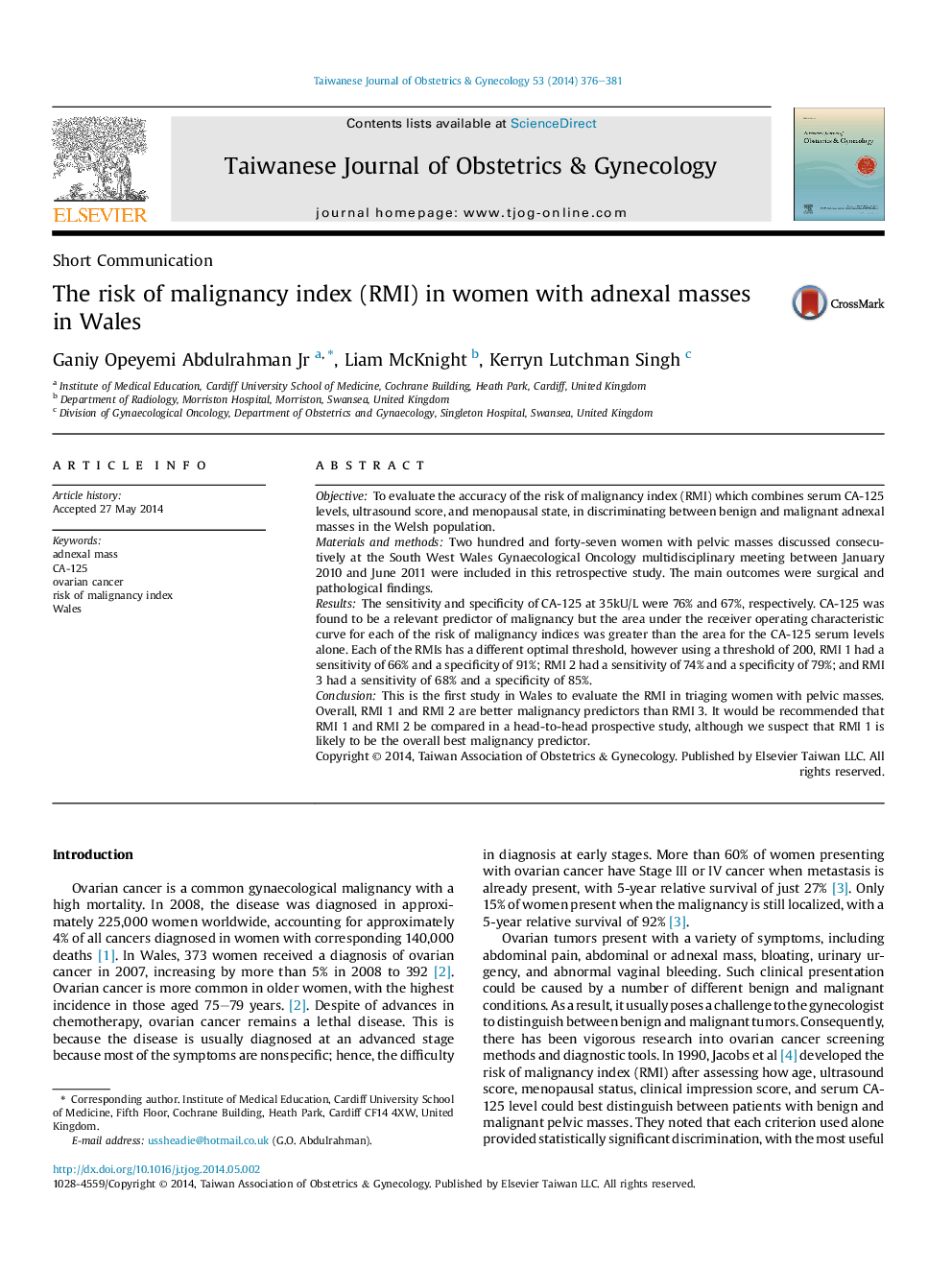| Article ID | Journal | Published Year | Pages | File Type |
|---|---|---|---|---|
| 3975209 | Taiwanese Journal of Obstetrics and Gynecology | 2014 | 6 Pages |
ObjectiveTo evaluate the accuracy of the risk of malignancy index (RMI) which combines serum CA-125 levels, ultrasound score, and menopausal state, in discriminating between benign and malignant adnexal masses in the Welsh population.Materials and methodsTwo hundred and forty-seven women with pelvic masses discussed consecutively at the South West Wales Gynaecological Oncology multidisciplinary meeting between January 2010 and June 2011 were included in this retrospective study. The main outcomes were surgical and pathological findings.ResultsThe sensitivity and specificity of CA-125 at 35kU/L were 76% and 67%, respectively. CA-125 was found to be a relevant predictor of malignancy but the area under the receiver operating characteristic curve for each of the risk of malignancy indices was greater than the area for the CA-125 serum levels alone. Each of the RMIs has a different optimal threshold, however using a threshold of 200, RMI 1 had a sensitivity of 66% and a specificity of 91%; RMI 2 had a sensitivity of 74% and a specificity of 79%; and RMI 3 had a sensitivity of 68% and a specificity of 85%.ConclusionThis is the first study in Wales to evaluate the RMI in triaging women with pelvic masses. Overall, RMI 1 and RMI 2 are better malignancy predictors than RMI 3. It would be recommended that RMI 1 and RMI 2 be compared in a head-to-head prospective study, although we suspect that RMI 1 is likely to be the overall best malignancy predictor.
